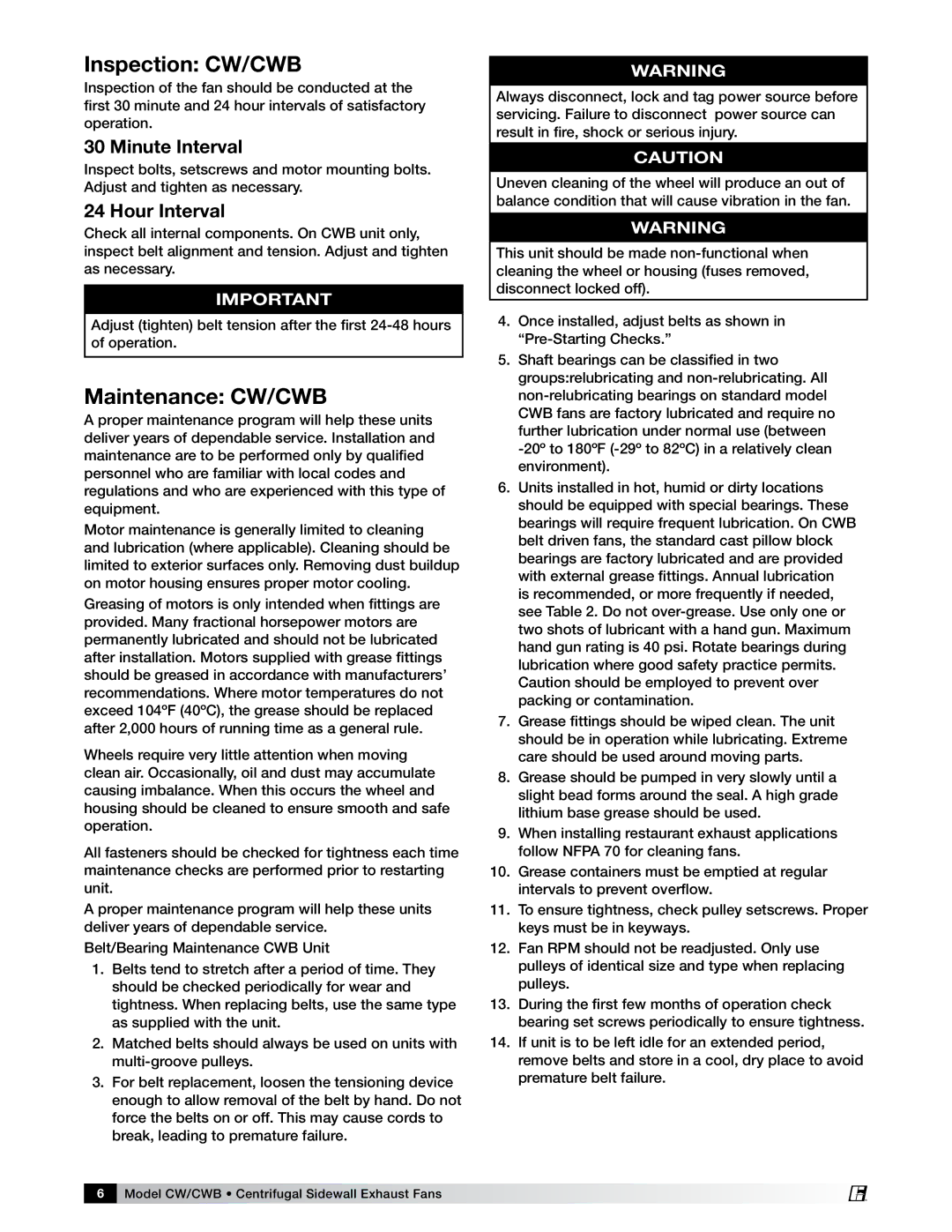CW/CWB specifications
Greenheck Fan CW/CWB series units are engineered to deliver exceptional performance and efficiency in a wide range of commercial and industrial applications. These fans are particularly noted for their versatility, reliability, and advanced technology, making them an ideal choice for various ventilation and exhaust needs.One of the standout features of the CW/CWB series is its robust construction. Built with high-quality materials, these fans ensure durability and longevity even in the most demanding environments. Their design incorporates a heavy-gauge steel housing that effectively reduces noise levels, allowing for quieter operation without compromising performance.
The CW/CWB fans are equipped with high-efficiency motors that significantly reduce energy consumption compared to conventional fan systems. These motors are designed to operate at optimal efficiency, which not only lowers operating costs but also minimizes environmental impact. The fans are available in various configurations, including belt-drive and direct-drive options, providing flexibility to meet specific application requirements.
In terms of airflow performance, the CW/CWB series boasts an impressive range of airflow capacities. With a wide selection of sizes and wheel diameters, these fans can be tailored to suit the unique demands of different spaces. The efficient fan design promotes balanced airflow, ensuring uniform distribution without dead spots or turbulence.
Another notable characteristic of the CW/CWB fans is their ease of maintenance. The thoughtfully designed housing allows for simple access to internal components, making routine inspections and servicing straightforward. This design feature is particularly beneficial for facilities looking to minimize downtime and maintain optimal operational efficiency.
The integrated technologies of the CW/CWB series enhance their overall performance. Advanced automation options, including variable frequency drives (VFDs), enable precise control of fan speed and airflow. This adaptability allows operators to respond to changing conditions and demands quickly.
In summary, Greenheck Fan's CW/CWB series units epitomize high-performance ventilation technology. With their durable construction, energy-efficient motors, exceptional airflow capabilities, and user-friendly maintenance features, these fans are an excellent choice for a diverse range of applications, ensuring reliable and efficient operation for years to come.

